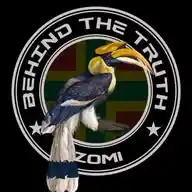
𝔹𝔼ℍ𝕀ℕ𝔻 𝕋ℍ𝔼 𝕋ℝ𝕌𝕋ℍ (𝔹𝕋𝕋)
January 24, 2025 at 04:15 AM
*Day 5: Routes of Transformation*
Before our part of the world was cut across by those lines in a map we now call borders, the mountains and valleys were inhabited by valley kingdoms and hill tribes. Sometimes, hill people moved to the valley to form kingdoms like the Ahom and Shan. Sometimes, valley people moved to the hills to escape marauders.
_Migration is often understood as the movement of people from one place to another, but its meaning is much deeper than the simplistic reduction that this definition implies_. Migration is inherent to all people. At some point, everyone moved from one place to another, running away from or displacing other people in their movement or mixing together to form new communities.
_For the Zomi, the routes of our movement represent something much deeper—a continuous process of transformation—the journey from the Chindwin Valley to the Zo Hills_.
The routes and transformations of our people are not just about geography; but a philosophical evolution, reshaping their identity, culture, and worldview at every step.
_The Chindwin Valley, often described as the cradle of the Zomi settlement, was a pivotal starting point. Here, the Zomi established their roots, developing agricultural practices and social structures that would later evolve as they moved into the hills_. As Vumson (1986) notes, *the Chindwin Valley served as a secure base for the Zo people, giving them protection from external enemies and a rich environment for their early development*.
The pressures of invading kingdoms and conflict have pushed the Zomi into the Zo hills. A hundred years later, those contiguous hills became divided into the present states of Manipur, Mizoram, and Chin State.
According to Thangkhangin (1979), *the migration into the hills was marked by the establishment of villages that operated as autonomous units governed by chiefs who balanced traditional authority with practical leadership*. The Zomi adapted their agricultural practices to the highland environment, shifting from the Chindwin Valley's settled farming to the hill region's shifting cultivation.
These changes were not just practical but also philosophical, reflecting a worldview that emphasized harmony with the land and a deep understanding of environmental cycles.
The routes taken by the Zomi also brought cultural exchange. Encounters with Burmese, Meitei, and other neighbouring groups introduced new ideas, technologies, and even conflicts. However, instead of eroding their identity, these interactions enriched them. As Vumson (1986) observes, *despite differences, the Zo people maintained their traditions, adapting and reinventing themselves anew*.
The borders imposed by colonial powers and the modern nation-state could not erase the connections forged through shared journeys. _The Zomi demonstrated that migration is not merely an act of moving; it is a universal phenomenon shared by all of humanity. It embodies our routes into Modernity and predates the lines on the map that we call borders_.
*Insight:*
Our roots and routes teach us resilience. They force us to adapt, negotiate, and transform. For the Zomi, _each movement was a step toward a deeper understanding of their identity_. What about you? How has movement—whether physical or emotional—reshaped your sense of self?
*Historical Note:*
The Chindwin Valley, as the heartland of the early Zomi settlement, played a critical role in shaping their migration narrative. From this fertile base, the Zomi embarked on a journey of adaptation that continues to define them today.
*Quote to Highlight:*
"Our routes are not just movements; they are transformations. With each step, the Zomi redefined their place in the world, carrying their traditions while embracing change."
*Discussion Prompt:*
How do you see your historical routes reflected in your own story or that of your community? What lessons has it taught you about resilience and adaptation?
*BTT*
🔴🟡🟢
https://whatsapp.com/channel/0029VaYCqe71yT229xZ6f42y
👍
❤️
💉
💯
😂
💩
48